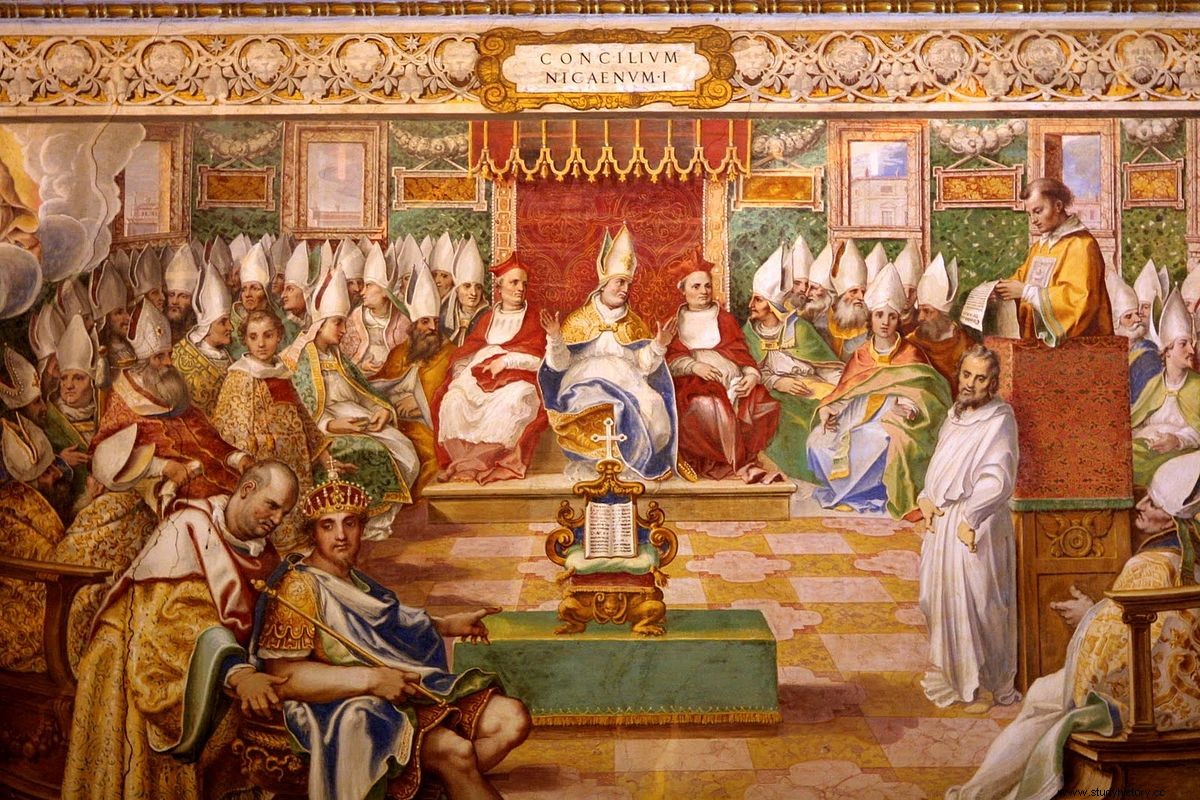If Saint Peter was the "stone" on which the Church was built, the emperor Constantine I the Great he could be considered the architect and, above all, the one who financed the construction of the Church. After the celebration of the Council of Nicaea (today Iznik, Turkey) in 325, the foundations and structure of the new Church were laid. In addition, and as if it were the millionaire inheritance of a distant uncle who went to the Americas, he received the Constitutum domini Constantini imperatoris (Donation of Constantine)…

the Pope [at this time Sylvester I], as successor of Saint Peter, has primacy over the four Patriarchs of Antioch, Alexandria, Constantinople and Jerusalem, also over all the Bishops in the world. The Lateran basilica in Rome, built by Constantine, will rule over all churches as head, likewise the churches of St. Peter and St. Paul will be endowed with rich possessions. The main Roman ecclesiastics who can also be received as senators, will obtain the same honors and distinctions as these […] The Pope will enjoy the same honorary rights as the emperor, among them, that of wearing an imperial crown, a purple cape and tunic, and in general all imperial insignia or signs of distinction […] The emperor presents the Pope and his successors with the Lateran Palace in Rome, as has been said, like all the provinces, places and cities of Rome and of Italy or of the regions Western […] The emperor has established for himself, in the East, a new capital that bears his name, and there he will transfer his government, because it is inappropriate for a secular emperor to have power where God has established the residence of the head of religion Christian [...] The document concludes with curses against all those who dare to violate these gifts and with the certainty that the emperor has signed them with his own hand and has placed them in the tomb of Saint Peter.
A detail of taking the capital of the Empire to Constantinople so as not to mix temporal and celestial power. This document, which certified the spiritual power over all of Christianity and the temporal power over certain territories, was used by the Popes throughout the Middle Ages in the multiple puddles in which the Church got into due to territorial conflicts. Until cake was discovered in the fifteenth century... it was more false than Judas.
In the fifteenth century the linguistic studies of Nicolas de Cusa , Lorenzo Valla and Reinaldo Pecok They have already shown that it was false. It included eighth- and ninth-century expressions, turns of phrase, and even terms completely unknown in the fourth century, when it was supposedly dated. However, the success of the forgery was absolute and achieved the objective that was set:to sustain the freedom and independence of the Church against the civil power, as well as serving to justify the temporal power of the papacy.
According to the Venetians, in 1177 Pope Alexander III he had recognized their sovereignty over the Adriatic Sea, and to commemorate it they created the feast of the betrothal of Venice with the sea. On Ascension Day a retinue of ships, led by the Doge in the royal galley Bucintoro , they entered the sea and a ring, previously blessed by the Patriarch of Venice, was thrown to the cry of…
Desponsamus te, mare, in signun veri perpetuique dominion (We marry you, the sea, as a sign of true and perpetual dominion)

Years later, in one of the many disputes between the Republic of Venice and the Papal States, the Pope asked to see the act by which the Venetians were the owners of the Adriatic Sea. The Venetian ambassador replied…
Your Holiness, is on the back of the donation made by Constantine to the Roman Church.
Faced with such overwhelming proof, the Pope lowered his ears and remained silent.
Sources:Of the human and the divine
